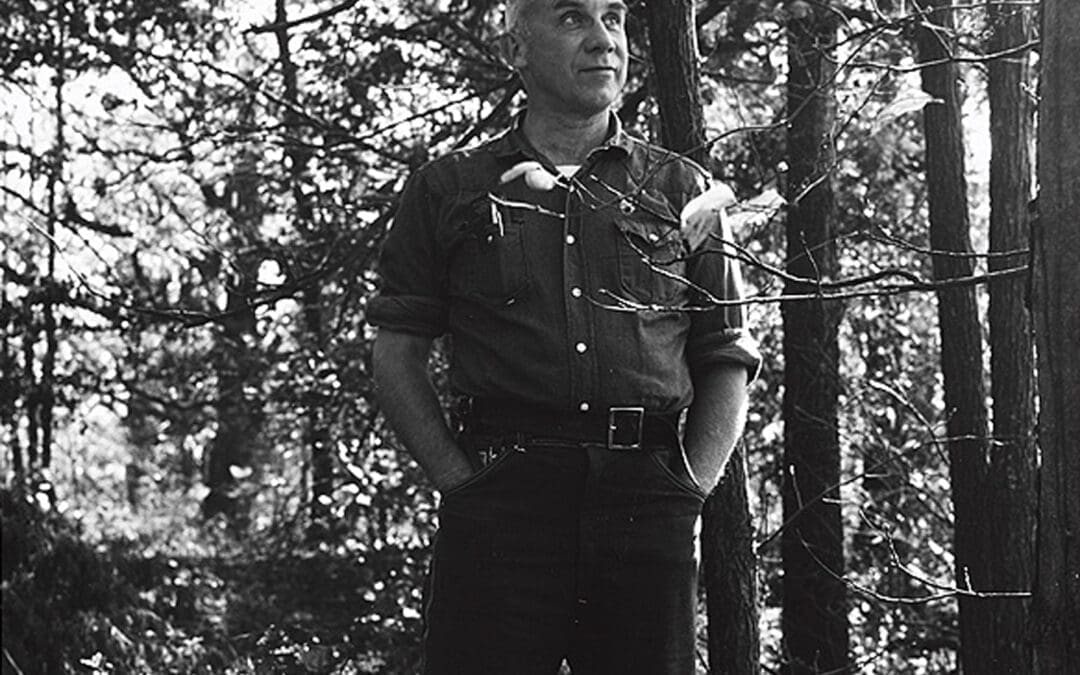One of the most troubling phenomena of those concerned with the seeming decline of privacy in the modern age is the gaping discrepancy between how much people say they care about the protection of their privacy and private information, and what people actually do. This discrepancy—“privacy paradox”—should come as no surprise to anyone who has clicked “I Agree,” without bothering to wonder just what it is they are agreeing to. Of course I care about my privacy. But things are much more convenient this way.
A recent New York Times headline may have declared, “It’s Time to Panic About Privacy,” but the panic doesn’t seem to have taken hold. I read the article and scrolled to the next. I have not deleted my Google account or even my Facebook account. I would still really like one of those cameras that will livestream my dog to me while I’m at work.
On the one hand, privacy is ingrained in our imaginations and speech as an inalienable right—clear and bright. However, in the concrete realities of our daily patterns and practices this clarity seems to blur. For many it is not at all obvious why one should value not being seen unless they have something to hide. What, after all, does it mean to value our privacy? If it’s true that we are losing our privacy, then what exactly is it that is slipping through our fingers, and why should we care?
The beginnings of an answer, or at least one sort of an answer, might be found in the philosophy of Hannah Arendt.
A Public Woman Defends the Private Mind
Hannah Arendt may seem like a strange figure to turn to for insight into our private lives. A Jewish thinker who fled Germany during the Second World War, Arendt is, for the most part, much more concerned in her written work with the realities of political action than with private retreat. Indeed, it would be difficult to find a thinker more impressed by the importance of the public sphere, appearance, and the world that we build and inhabit together. Though she studied under Heidegger and Karl Jaspers, Arendt consistently rejected the title of philosopher. Her concern was not with esoteric or disembodied thought, but with the everyday, concrete realities of human existence. Her focus was less on mastering an understanding of the world, and much more on drawing our attention to the utter unpredictability of human action—our constant capacity to start something new, something never seen before.
This creative capacity, for Arendt, is something inherently public. We do not act in a void, but in a world of diverse human relationships, and our ability to change the world will always require others taking up our cause and joining in our action. While it is through action that “men show who they are [and] reveal actively their unique personal identities,” Arendt is clear that such personal revelation is only meaningful within the context of an audience. For it is only in interaction with others that we gain a sense of our own reality, and the reality of our shared world. In a sense, then, the public world of appearances is not a superficial world, but something profoundly human and meaningful.
Alongside this affirmation of public creation and appearance, however, there runs another quiet, persistent thread through Arendt’s work: an affirmation of the private. There are some things, Arendt insists in The Human Condition, “that need to be hidden and others that need to be displayed publicly if they are to exist at all.” Just as some actions need the space of a public square and a public audience, others need the privacy of one’s own four walls.
For some readers of Arendt, this private, hidden realm takes on a decidedly negative flavour. What must be hidden, it seems, is ultimately all those unpleasant bodily aspects of being human—our hunger, the laundry, sweeping, sleeping. The private is full of those things that are not worth seeing or hearing, the everyday necessity that has no place in a flourishing and free public sphere. Too often, this means that particular humans are not worth seeing or hearing; think of the historical treatment of women, and slaves, for instance.
But these abuses do not mean that the private realm cannot be understood solely in terms of privation and oppression. There is, instead, a distinct richness that the private lends to reality, which can and should be an aspect of every human life. As Arendt writes, “A life spent entirely in public, in the presence of others, becomes, as we would say, shallow. While it retains its visibility, it loses the quality of rising into sight from some darker ground which must remain hidden if it is not to lose its depth in a very real, non-subjective sense.” The public world of appearances must be rooted in something that does not appear.
But what does it mean to be hidden in a world of appearances? Arendt begins to offer us an answer in her final work, The Life of the Mind. In contrast to her work on the public and political, Arendt’s final book explores the invisible world of thinking, and its stubborn retreat from the world of appearances. Thinking, for Arendt, is a hidden thing.
Importantly, the hiddenness of thinking is not simply a function of the fact that we can’t see what’s going on in someone else’s mind. What distinguishes thinking is not simply that the workings of the human brain are invisible, but that the work of thinking leaves behind no tangible results.
This aspect of the hiddenness of thinking is rooted in its distinction from simple cognition. Whereas cognition deals with sturdy facts, thinking always presses beyond what we can solidly grasp. In this way, thinking is not so much a systematic pursuit of a solution as it is a relentless barrage on all solutions. It is not so much getting straight on what you believe as it is submitting your beliefs to an endless childlike questioning of “why?” Thinking, for Arendt, is not so much the engineer’s painstaking calculations as it is the useless wondering “what if?”
The inevitable result is that thinking will never and can never have anything concrete to show for itself. The final product, after following a long and winding train of thought, is only perplexity. One is left, in the end, with more questions. Arendt likens the activity of thinking to Penelope’s web, whose progress is undone each night so that in the morning it must be woven anew. It is a perpetual doing, which is never done.
In this way, thinking mirrors other private activities—not only our laundry and dishes and sleep but also our intimate relationships, which need to be cared for anew each day. In contrast with our public creativity and action, which shapes the world in new ways, thinking leaves no tangible trace. In contrast with the grand and obvious narratives of the public, these private activities are a constant and repetitive thrum.
Arendt’s strange claim in The Life of the Mind, however, is that somehow, in our world of appearances, these disappearing practices matter. For, as she writes, “this kind of pondering reflection does not produce definitions and in that sense is entirely without results, though someone who had pondered the meaning of ‘house’ might make his own look better.” Someone who returns home each night to a dogged questioning may not come up with any answers, but she may be less quick to go along with the easy answers she is given.
For, in the end, there is something unsettling about someone going about changing the world (really changing it!) who does not return home each night to the nagging questioning of a still small voice. There is something unsettling about someone whose actions reverberate through a web of human relationships who does not know their patterns and their joys, who does not, at the end of the day, sit down for long, winding conversations that go nowhere.
In this way, Arendt offers us a way of understanding the private that is concerned not only with the information about ourselves that we might wish to keep hidden or secure, but also with the daily practices we engage in, which, though they may not appear on any balance sheet or history book, may lend new care to the way one approaches the common world.
Creation and Commentaries
The challenge of appreciating these private practices was clarified for me recently in a conversation with my neighbour.
My husband and I recently bought a house in East Hamilton, Ontario. The previous owners had left it vacant for years. A hole in the roof meant it was raining inside, a number of racoons had made their home on the third floor, and a large section of the foundation was crumbling ominously, so that our last summer was spent peeling old drywall, digging trenches for new plumbing, and lugging buckets of dirt and smashed concrete to a dumpster in our front yard.
Our neighbours spend a lot of their time on the front porch—right on our path to the dumpster, and so we got to know them fairly well over the course of the summer. Asking my neighbour how he was one day, he replied, rather wearily, that he was quite busy. When I asked what he was busy with he told me that it was “commentaries mostly.” Intrigued, I asked him what these commentaries were, and he explained, simply, that he would watch movies and give commentary.
“Do you write them down?”
“No.”
“Record them?”
“No.”
“Is anyone else there?”
“No, just me.”
I admit his answers took me rather aback. I also felt busy that summer—felt tired and dusty—but it was because I was creating something. In a concrete sense, I was helping to build and restore something. Even when progress felt slow, there was always a project I could point to and say, “That is what I did today.” In contrast, my neighbour’s commentaries struck me as painfully fleeting. They would make no real appearance in the world and they would leave no trace. There would be no witnesses and nothing to show for it. It was all so terribly private.
Only later, pulling nails from old floorboards, did it strike me that, perhaps, valuing the private might mean precisely being busy with commentaries. Perhaps valuing the private, the way Arendt does, might mean seeing with new eyes those stretches of time I tend to see as wasted—the hours staring into space on the couch, not typing a single word, or the bus rides in which my mind wanders as I watch the same streets blur past every day.
Leave Me Alone
Some of the roots of our modern understanding of privacy as something to which everyone has a right can be traced back to an influential 1890 Harvard Law Review paper by Samuel D. Warren and Louis Brandeis, latter of whom would go on to become a Supreme Court justice. The paper, titled the “The Right to Privacy,” was written largely in response to the increasingly invasive reporting that had sprung up with the development of affordable and portable cameras. This advancement in technology, Warren and Brandeis argued, warranted a change in law, a new protection for a right that, until then, had not needed special protection—the right to be left alone.
For Warren and Brandeis, this meant not having one’s private affairs plastered over local newspapers and not being interrupted by flashing cameras. However, with Arendt in mind, we might wonder whether our own further advances in technology have imbued being “left alone” with further meaning. No reporters have ever followed me home, or even asked to visit my home. However, thanks to the phone in my pocket and the streaming services at my disposal, I am very rarely alone in the sense that Arendt found so crucial. There is rarely a silence in which I must begin to answer to myself.
The hour spent not writing and staring into space, more often than not, has become an hour spent mindlessly scrolling the equally endless feeds of information at my disposal. I listen to podcasts on the bus. I listen to podcasts while I walk my dog. My husband and I watch Netflix.
The point here is not that phones or podcasts or Netflix are bad. There is so much we can learn, enjoy, and gain from each of them. The point is simply that those empty, “wasted” spaces we have filled in these ways may themselves be something valuable, something essential even, that we have let slip through our fingers. Like Warren and Brandeis’s privacy, our empty spaces never needed any special protection, and so we have not learned how to guard them. Their value often goes unarticulated.
Valuing the Private
With these thoughts in mind, the current crisis of privacy takes on new and startling dimensions. While issues of information and identity protection remain important and relevant, what Arendt can help us to see is that what is potentially at stake is not simply the negative space of privacy, but the rich depth of our private lives. A robust protection of privacy then must include not only the enforcement and appreciation of our rights but also a new attention to the daily practices and rituals that form the patterns of our hidden lives, a new attention to those activities that have nothing to show for themselves.
To be clear, turning off the internet for an afternoon does not guarantee the sort of vibrant internal questioning Arendt describes. Often my mind wanders its way into a nap. The space carved out for meandering conversation may fill only with tired silence. Staring at a wall for an unproductive hour doesn’t guarantee richness of thinking anymore than a public square guarantees vibrant public discourse and political engagement.
What Arendt can help us to appreciate, however, is that these spaces still matter. Providing the architecture for our public and private lives is important. If we are going to meet and speak and act with others, it has to happen somewhere. Likewise, as much as we might love Arendt’s poetic descriptions of the thinking activity, it simply will not happen unless we carve out the decidedly unglamorous spaces in which it might thrive—spaces of unproductivity and wasted time and quiet. It is these dark and dingy spaces in which we might find depth.
In many ways, this insight should come as no surprise to a Christian audience. We are familiar with the stories of Christ retreating from public ministry to be alone. Many of us have been taught since we were children to punctuate our lives with prayer’s invisible conversation and the solitude of reflective meditation. However, what Arendt can perhaps help us to remember, what is often so easy for us to forget, is that the value of these private retreats does not lie solely in the answers we may or may not find there. Their value is found not only in the possibility of revelation but also in the depth of daily practice, in the richness of a relationship nurtured by the endless patterns of useless private conversation.
One of Arendt’s key insights in The Life of the Mind is that our public creation needs to be rooted in private practices. The boldness with which we make our mark on the world should be balanced by an equally bold capacity to ask ourselves “why?” and “what if?” The myriad of ways in which others must be abstracted and simplified should be balanced with the sort of intimacy that loves another quite apart from anything they can provide for us.
Caring for the private, then, means more than worrying about password encryption and the information our Facebook accounts might be selling to advertising firms. It also means attending to the time that we willingly spend surfing and scrolling and swiping. It means valuing a time for prayer even if you fall asleep. It means attending to how we spend those wasted and in-between and useless bits of time that could never show up on a Wikipedia page and that the government wouldn’t even be interested in knowing, but that nevertheless are somehow worth fiercely and diligently guarding.


